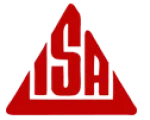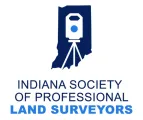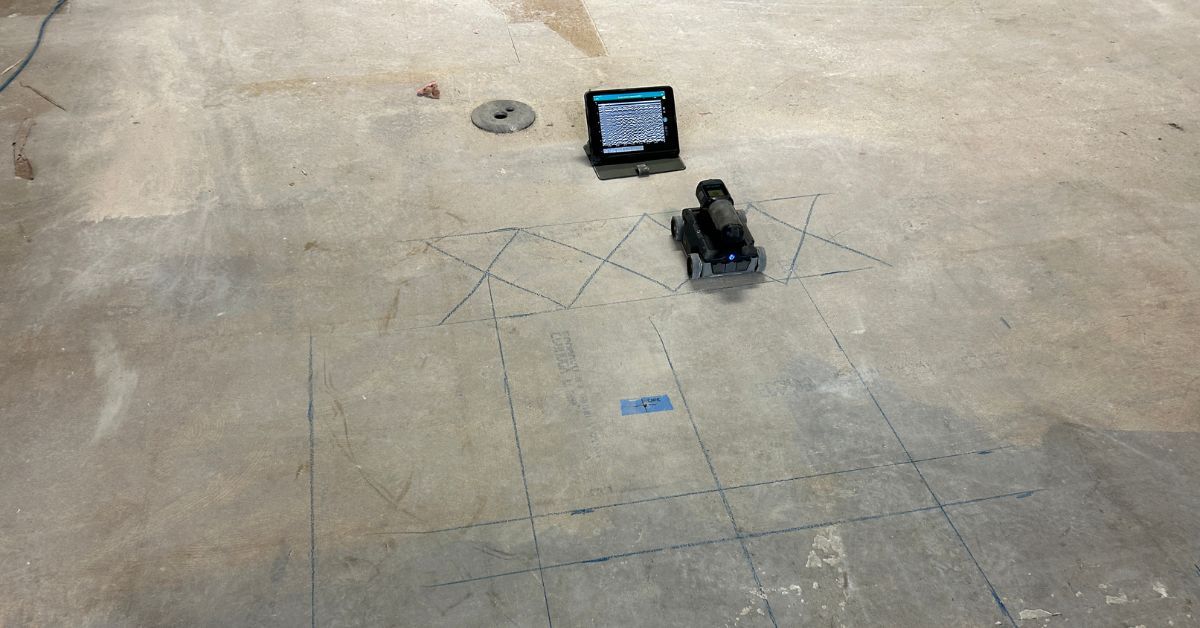
Coring concrete is an essential process in many construction and engineering projects, whether it's for installing utilities, creating openings for HVAC systems, or conducting structural assessments. However, coring without adequate preparation can lead to significant challenges, from structural damage to project delays. Below, we'll explain the top reasons professionals should always scan concrete before coring and how it enhances safety, efficiency, and accuracy on a job site.
What is Concrete Scanning?
Concrete scanning is a non-destructive testing method for identifying and mapping the internal features of concrete structures, such as rebar, post-tension cables, electrical conduits, and voids. This process typically utilizes advanced technologies like Ground Penetrating Radar (GPR) or X-ray imaging to generate detailed insights into the subsurface without causing any damage to the structure. By providing precise information about the composition and layout within the concrete, scanning allows construction professionals to plan safely and effectively, minimizing risks and preventing costly mistakes during subsequent operations like cutting, coring, or drilling.
What is Coring?
Coring is the extraction of cylindrical samples from concrete structures, typically using specialized drilling equipment fitted with a diamond-tipped core drill. This method creates precise openings for utilities like plumbing, electrical conduits, or HVAC systems, as well as tests the integrity and strength of the concrete. By obtaining these core samples, engineers can analyze the material's composition, detect potential flaws, and ensure compliance with structural and safety standards.
Why You Should Scan Concrete Before Coring
For construction crews and other professionals, there are many reasons to scan concrete before coring. From identifying hidden utilities to ensuring compliance with regulatory standards, concrete scanning is always worth the time and effort.
1. Identify Hidden Utilities to Prevent Damage
Concrete often conceals various utilities such as electrical conduits, water pipes, and gas lines. Accidentally cutting into these systems can result in service interruptions and expensive repairs.
For instance, damaging a pressurized pipe could lead to flooding, while severing electrical wiring could pose a fire hazard. Scanning ensures the location of these hidden utilities and marks them before coring begins, minimizing the risk of inadvertent damage.
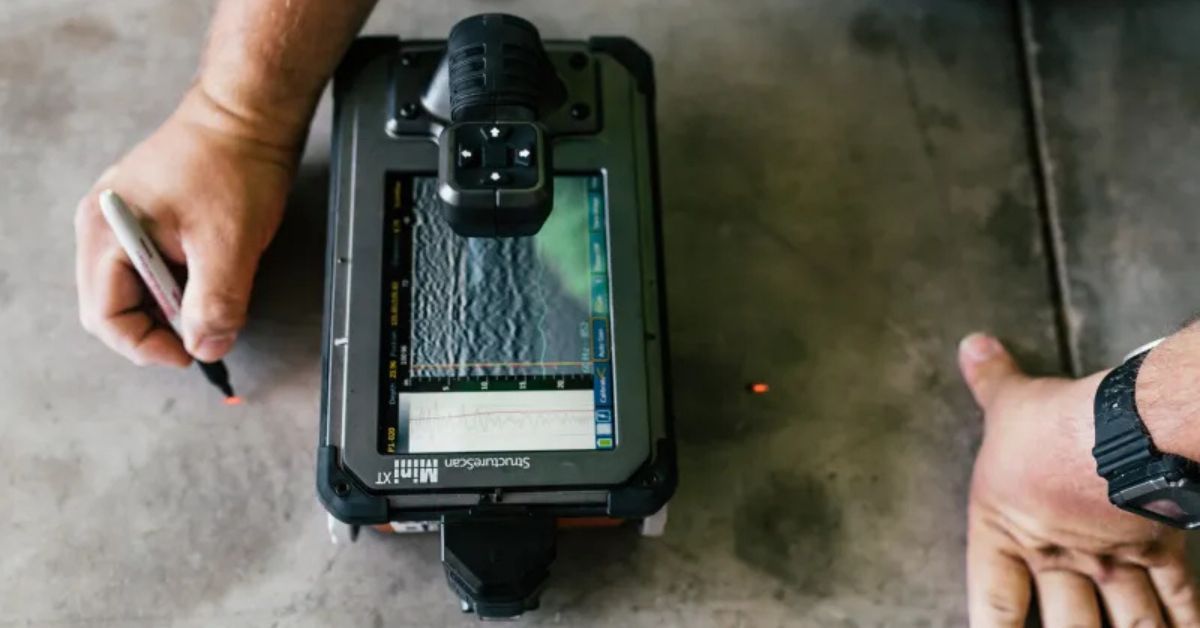
2. Preserve Structural Integrity
Every layer of reinforced concrete contains elements that contribute to the structure's overall integrity, such as rebar or post-tension cables. Cutting through these critical components can compromise the building's stability.
Post-tension cables, for example, are highly tensioned steel cables that hold the concrete together. If severed, they could snap back dangerously, leading to safety issues and structural damage. Scanning detects these elements and helps contractors avoid interfering with them during coring.
3. Enhance On-Site Safety
Safety should always be the priority in any construction project. Without proper scanning, coring might unknowingly breach hazardous materials, chemical conduits, or high-pressure systems, putting workers at significant risk.
Scanning provides a precise map of the subsurface environment, enabling teams to identify and avoid potential dangers. By proactively addressing these risks, scanning ensures safer operations, protects workers, and promotes a secure work environment.
4. Save Time and Reduce Costs
Mistakes during coring can lead to costly repairs and significant delays. Damaging critical systems like electrical wiring, plumbing, or structural reinforcements might halt operations entirely, creating downtime that impacts both timelines and budgets.
Scanning beforehand helps prevent these scenarios by identifying hidden obstacles in advance. This foresight enables teams to plan effectively, offering a clear roadmap that ensures smoother progress with fewer interruptions. By investing in scanning upfront, you can avoid expensive setbacks and keep your project on track.
5. Guarantee Accurate Placement
Accuracy is key when it comes to coring. Even minor misalignments can have a ripple effect on subsequent phases of a project, potentially requiring rework or adjustments that waste time and resources.
Concrete scanning provides pinpoint precision, helping teams locate the exact spot for coring without relying on assumptions or guesswork. This level of accuracy minimizes errors, supports the overall integrity of the construction project, and ensures the correct execution of the work from the very beginning.
6. Ensure Compliance with Regulatory Standards
Construction and safety regulations are in place to protect workers, clients, and the public. Many of these regulations mandate pre-coring surveys to reduce risks and ensure work sites follow coring best practices. Skipping this step could lead to legal complications, fines, or delays due to non-compliance.
Concrete scanning guarantees that your project aligns with industry standards and regulatory requirements, offering peace of mind that you're operating within the law. It also demonstrates a commitment to safety and quality, which can strengthen relationships with clients and stakeholders.
7. Minimize Downtime
Unexpected obstacles during coring can disrupt workflows, delay schedules, and create a cascade of problems. Encountering hidden rebar, dense aggregates, or pipes during coring can force teams to pause operations and cause unplanned downtime.
Scanning minimizes these disruptions by providing a comprehensive and accurate assessment of subsurface conditions. With this information in hand, teams can develop strategies to work around obstacles and stick to timelines, ensuring projects progress smoothly and efficiently.
8. Improve Overall Project Efficiency
Concrete scanning doesn't just save time—it also improves the efficiency of the entire coring and construction process. With precise data about the subsurface environment, teams can plan more effectively, avoid unnecessary delays, and reduce the likelihood of errors.
This speeds up individual tasks and enhances the overall workflow, ensuring the fast completion of projects without sacrificing safety or quality. By streamlining operations, scanning boosts productivity and supports better outcomes for clients and stakeholders.
9. Protect Expensive Equipment
Coring tools, such as diamond-tipped drills, represent a significant investment in construction projects. Hidden obstacles like dense aggregates, steel reinforcements, or unexpected voids can quickly damage these tools, leading to costly repairs, replacements, or downtime.
Scanning in advance helps identify these risks, enabling teams to plan appropriately and avoid unnecessary damage. By protecting expensive equipment, scanning saves money and ensures the efficient use of valuable resources throughout the project.
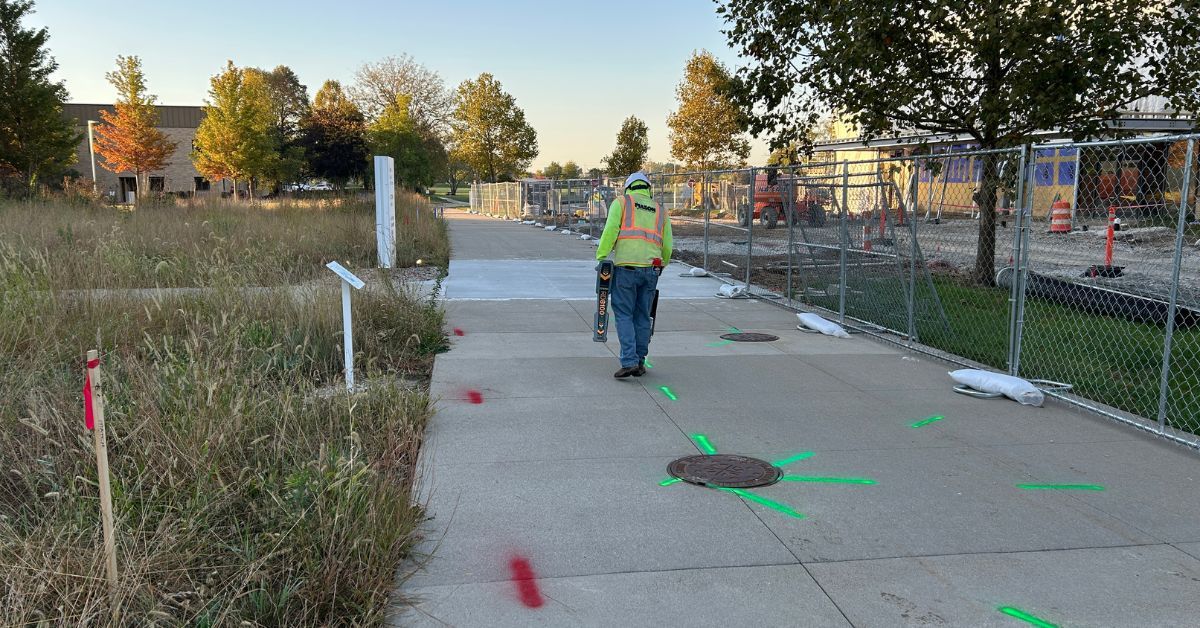
10. Document Subsurface Conditions
Concrete scanning provides more than just immediate benefits—it also creates a lasting record of subsurface conditions. These records can be incredibly valuable for future construction activities, whether they involve renovations, expansions, or maintenance work. Many regulatory audits or inspections also require detailed documentation, and having a comprehensive subsurface map on hand can streamline these processes.
Mason Private Locating's Concrete Scanning Services
Now that you understand the importance of concrete scanning, you need to find a concrete scanning company that offers reliable services. Thankfully, you don't have to look far, as Mason Private Locating (MPL) offers reliable, industry-leading concrete scanning solutions for your project's needs. Using GPR technology, we provide accurate insights into subsurface conditions to help you avoid costly errors and safety risks.
From marking hidden utilities and rebar to confirming optimal coring locations, our trained professionals will cover every detail. Beyond identifying obstacles, MPL's services align with regulatory safety standards, giving you peace of mind that your project complies with all guidelines. Avoid delays, structural issues, and damage to tools—let MPL help you plan effectively and execute efficiently because every successful project starts with informed decisions.
Plan Ahead with MPL
Concrete coring is high-risk and requires precision, making concrete scanning a necessity to ensure safety, protect structural integrity, and streamline project timelines. At MPL, we combine expertise with cutting-edge technology to make every core count. Start your project with confidence—contact us today to learn more about our concrete scanning services.



